Occasionally I click on the “This PC” Icon in my folder and am greeted with red lines indicating that my hard drives are nearly full, So I think to myself, time to buy another hard drive, but how many can more can I cram in there?
Most Desktop PC motherboards are equipped with 4 ports that are suitable for hard drives (SATA) and more frequently they have 6 or more. On some motherboards, this can be increased using PCI slots. As for bigger Laptops, they likely will have 2 ports and most Netbooks will have 1. There are some easy ways to tell how many your computer can fit…
Don’t worry, you don’t even have to open the case! There are several ways to tell how many hard drives you can fit into your computer and exactly what type of hard drive you need.
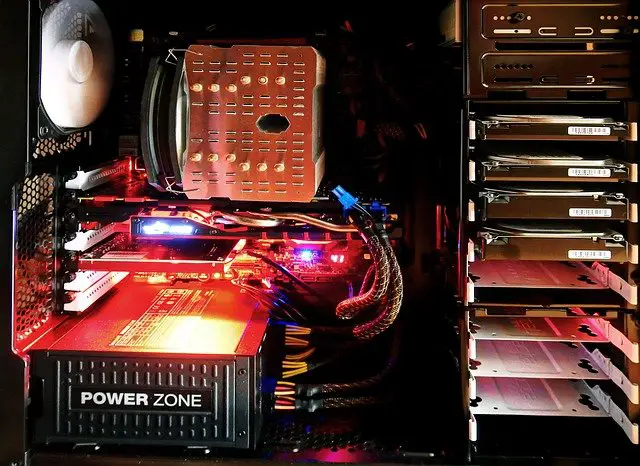
Contents
How to tell how many hard drives I can fit in my desktop PC
There are a few ways to tell but let’s have a look at a few easy ones.
By using your operating system
If you don’t fancy going through BIOS or opening up the case of your computer there is an easier way and to be honest, this is the best wayt in my opinion because you don’t have to reboot!
Most motherboard manufacturers will have a list of specifications for every model and you can simply look it up.
Firstly you need to know what model you have and who made it. To do this hit the windows key and type “system information” once it is open you will see a long list of information specific to your computer. Look for the “BaseBoard Manufacturer” and “BaseBord Product” and “BaseBoard Version” fields. if you click on them to highlight them you can copy the information by pressing Ctrl C and then pasting the information into a search engine. You may have to remove the BaseBoards bit to make it easier for your search engine.
I would search for the manufacture name, product and version followed by “Specification” For example lets search “ASUS ROG STRIX B550-F GAMING specification” This takes me to the ASUS page, and under Tech Specs I can see it supports 2 x M.2 slot(s) and 6 x SATA 6Gb/s ports… not bad!
Openeing the case
If you feel confident in tinkering with your PC it might just be easiest to open it up and have a look, you will be able to see exactly how many SATA, PATA to PCI slots your motherboard has and how many are used up. Bear in mind that an optical drive will use the same connection so it will be using one of the slots at least if you have one.
Without opening the case – checking BIOS
If you don’t know the difference between SATA, PATA, PCI or any other techy acronym then don’t worry there are still a couple of easy ways to tell. The first is still a bit techy and it involves opening up your computer’s BIOS.
The BIOS, which is also referred to as UEFI firmware, informs your computer what storage drives you have, which drive to boot from, the components of your computer, as well as a whole host of other functions. You can use BIOS To change boot settings, set system passwords, disable ports and a whole host of other things, but in this case, we want to get information from it.
To access the BIOS you need to use the hotkey for your system. This is done by pressing the desired hotkey continuously while your computer turns on. More often than not your computer will tell you the hotkey to use when it first turns on but sometimes this can flash by very quickly!
Here is a list of the most common manufacturers and their hotkeys. Bear in mind that depending on the age of your computer, the key may be different.
- ASRock: F2 or DEL
- ASUS: F2 for all PCs, F2 or DEL for Motherboards
- Acer: F2 or DEL
- Dell: F2 or F12
- ECS: DEL
- Gigabyte / Aorus: F2 or DEL
- HP: F10
- Lenovo (Consumer Laptops): F2 or Fn + F2
- Lenovo (Desktops): F1
- Lenovo (ThinkPads): Enter then F1.
- MSI: DEL for motherboards and PCs
- Microsoft Surface Tablets: Press and hold volume up button.
- Origin PC: F2
- Samsung: F2
- Toshiba: F2
- Zotac: DEL
If your computer is too quick or the hotkey doesn’t work you can use the “Advanced Start Menu” in Windows 10 onwards.
to do this hit the windows key and type – advanced startup
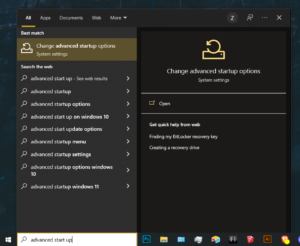
Click the first option to open the feature then click reset now.
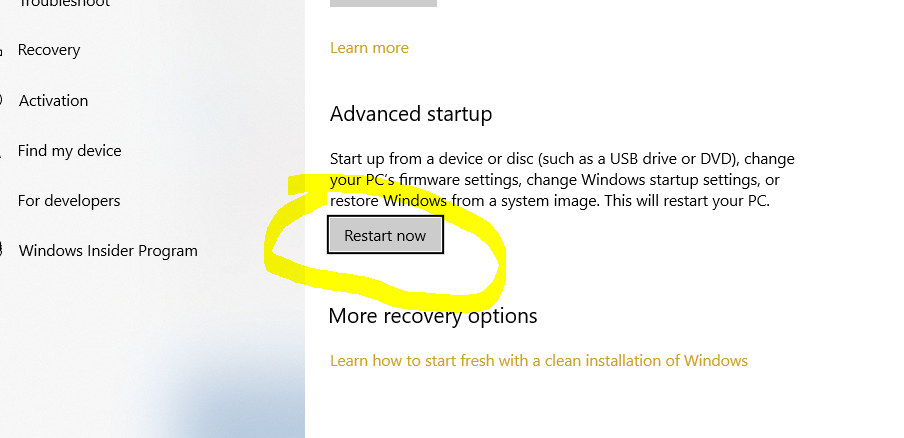
Your computer will reboot and will load into a menu. In the menu click the “troubleshoot” option.
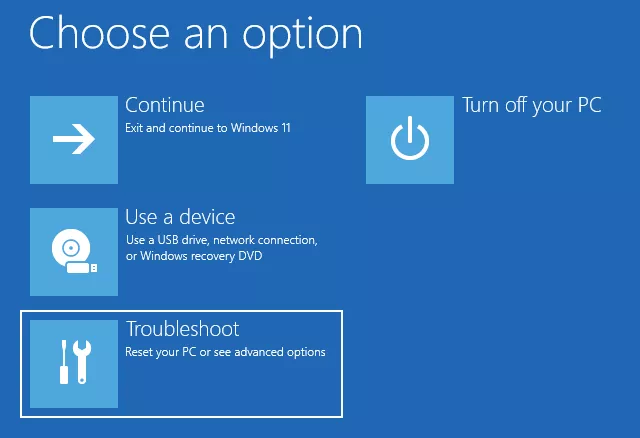
Then click the “advanced options”
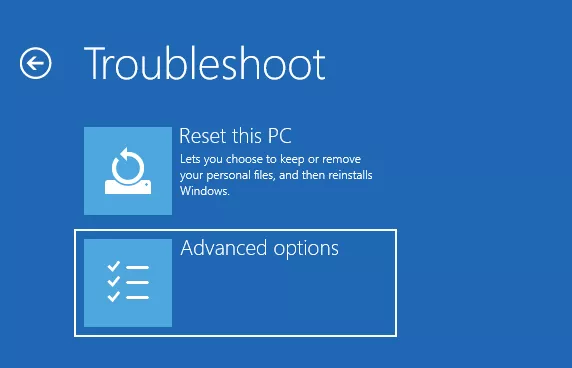
And then click “UEFI firmware settings”
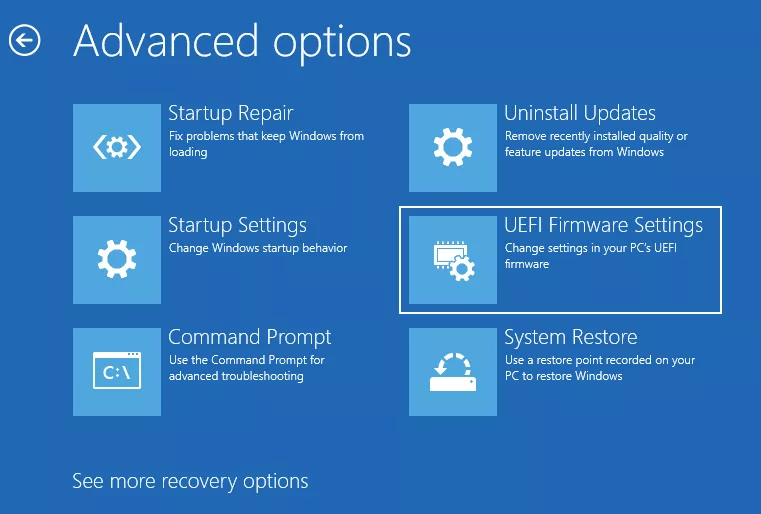
Then click “restart” and your computer will reboot into BIOS.
Ok so now we are in BIOS, not all BIOS are the same and often can look quite different, but all of them will inform you how many slots and ports you have available and what is using them. It will look something like this.

As you can see, this computer has 6 SATA ports and 2 are in use. You must be very careful when using BIOS not to change any settings. It is advisable that when you exit BIOS you ensure that You don’t save any changes.
How to tell how many harddrives I can fit in my Laptop.
Most laptops are proprietary and are released with easily identifiable specifications. This makes it easy to find out as all we need to know is the make, model and version of your laptop and we can look it up.
To do this hit the windows key and type “system information” and hit enter. This will give you all of the relevant information about your laptop. The ones we’re looking for are “system manufacturer” and “System Model” simply type these into your search engine of choice followed by the word “spec” or “specifications” and hit enter. Usually, you will be met with the manufacturer’s website where you will be able to find all of the technical information including the number of ports for drives and what types.
How to tell how many hard drives I can put in my Mac.
Macs are proprietary and each model will have a set specification that you can find from the apple website. To find your model number, click on the apple icon in the top right of your screen and select “about this mac” from there you can get the model number and year of manufacture. type this information into your search engine of choice and you will be able to find the tech specs on the apple website.
How to increase the number of hard drives I can fit inside my PC?
This comes down to two things, physical space inside your computer case and the availability of expansion slots on your motherboard. First things first are to look up your computer case model number and get the specifications for how many slots it has to hold hard drives. Secondly, you need to look up your motherboard specs as outlined above and see what specifications it has for expansion slots. This is as simple as using a search engine to look up the model numbers.
When you know both of these things you can then choose the right expansion board for your motherboard. It is important to check compatibility with your motherboard, chipset, CPU and operating system. All of this information can be found by hitting the windows key, typing “system information” hitting enter and checking the list for the relevant information.
Once you have an expansion card you may have to buy hard drive trays for your computer case and additional SATA and Power supply cables. It is very important to make sure your PSU (power supply unit) can cope with the demand of additional drives. It may require upgrading to a higher kW output.
What types of connection can I use for hard drives?
Hard drives come in a variety of forms and can use a variety of connections. Typically this will be either SATA or M.2 (NVME) but can also be PATA. By using the steps indicated above you can see how many hard drives you can have and you can also see what types you can have.
SATA stands for “Serial AT Attachment” and is a computer bus interface. SATA ports are 1 for 1 and cant be split or shared. Newer boards will have 6 SATA ports these days but it is more common for them to have 4, especially on cheaper PCs. Typically SATA drives are powered independently by the PSU.
PATA Stands for Parallel ATA (Advanced Technology Attachment), which is an older type of internal computer port. It has been replaced by SATA and Virtually all devices are now made to conform to the SATA standard.
M.2 relates to the form factor of the hard drive, where typically hard drives are 2.5″ or 3.5″ an m.2 drive is a much smaller and sleeker form factor. It uses a protocol called NVMe (Non-Volatile Memory Express) and can be connected directly to the motherboard in an m.2 slot using a PCIe interface. You can also get SATA versions if your motherboard doesn’t support NVMe.
Depending on the desired use of your hard drive an external hard drive using USB-C or a lightning cable can be a great option for increased space without using up precious slots. You can also use a SATA connection for an external NAS Raid setup which could be running a server or keeping everything backed up!
Conclusion
There isn’t a simple answer to the question but more often than not the answer is “at least one more!” There are various ways to tell if you can fit an extra hard drive into your computer and as you can imagine I highly recommend it especially when it means you can keep everything backed up!
